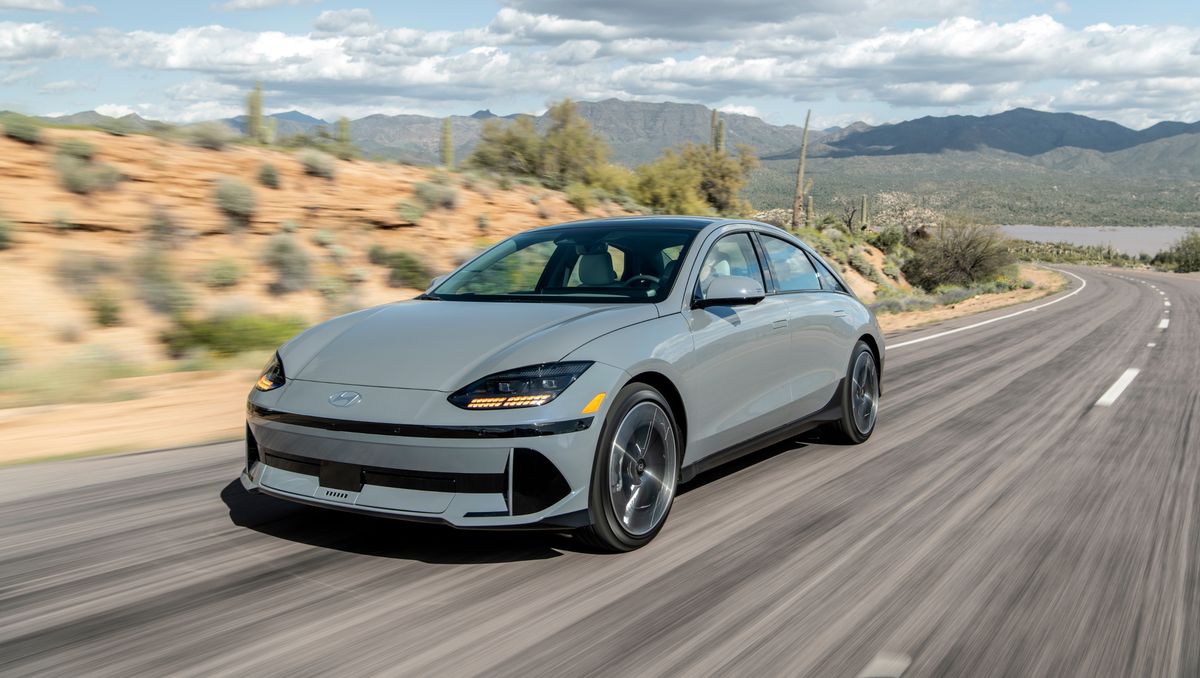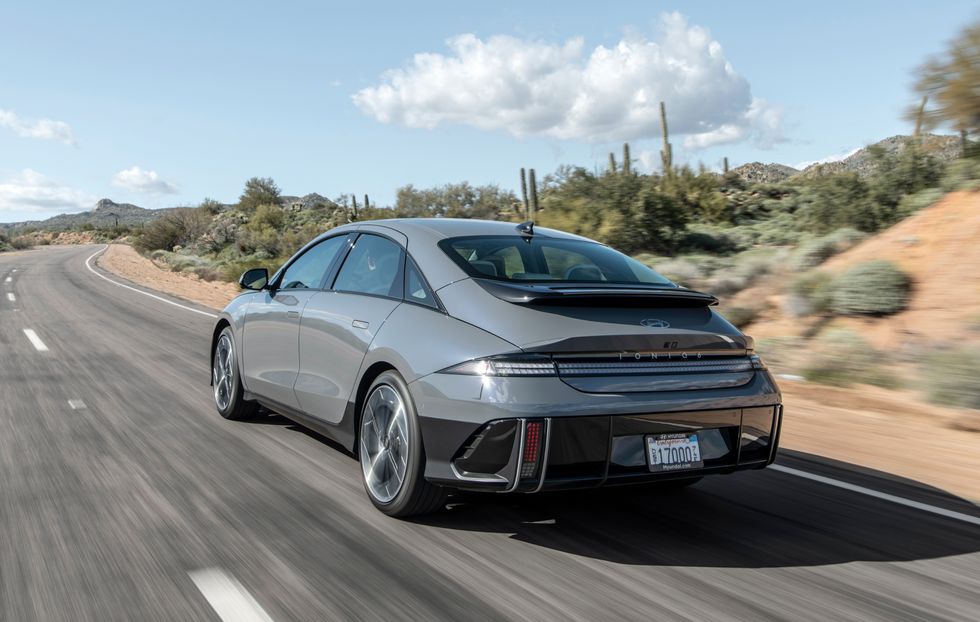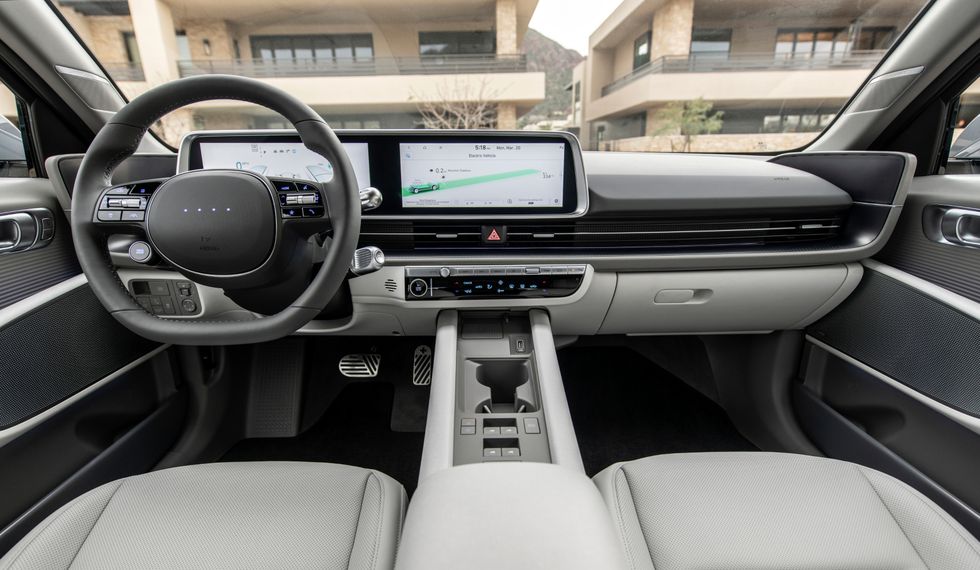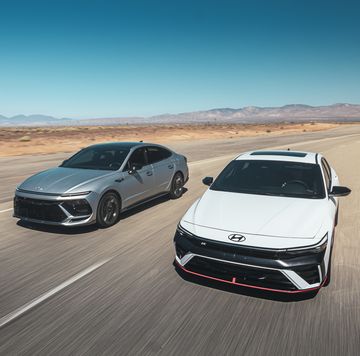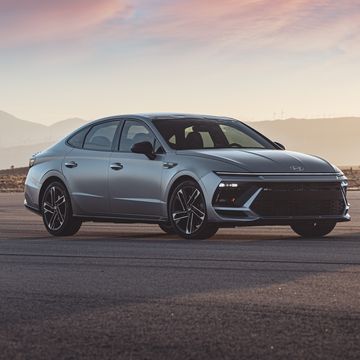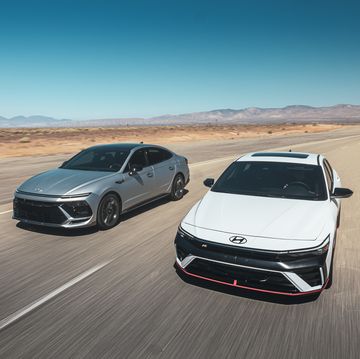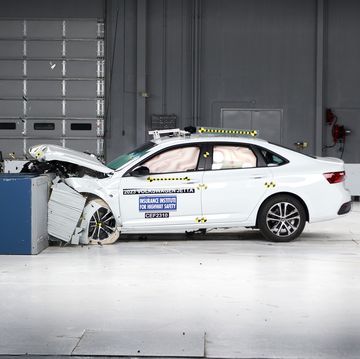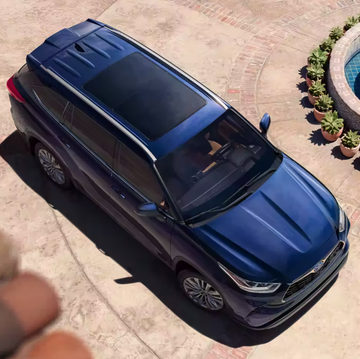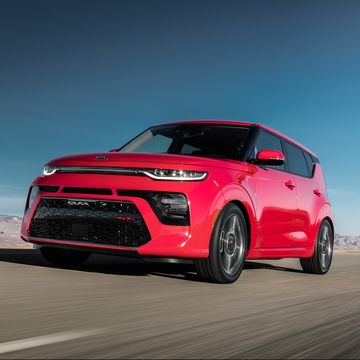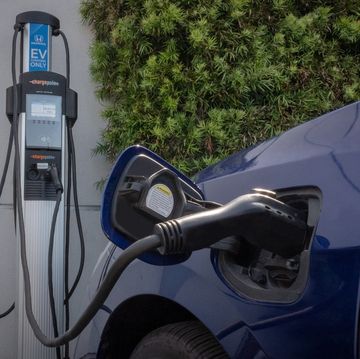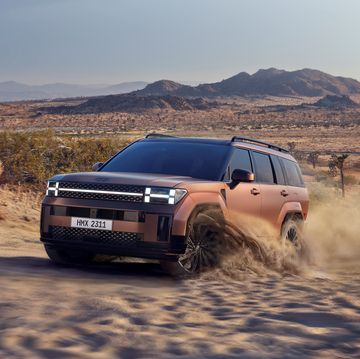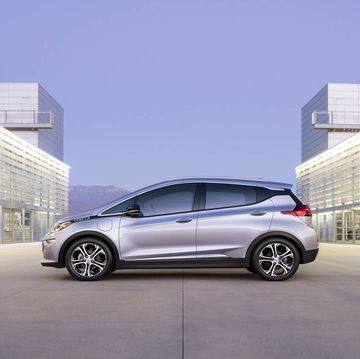- The all-electric 2023 Hyundai Ioniq 6 is hitting dealers right now, with base-model SE RWD Standard Range models arriving later this summer.
- Pricing for the Ioniq 6 SE RWD Standard Range starts at $42,715, with the range-topping Limited AWD starting at $57,215.
- The ’23 Ioniq 6 RWD Standard packs a single 149-hp motor, with the SE RWD Long Range getting a 225-hp motor. The all-wheel-drive models see two motors that combine for 320 hp.
Hyundai’s Ioniq brand started its humble life as a single product in 2016. Now, Ioniq operates as Hyundai’s battery-electric arm and churns out some of the most interesting vehicles in Hyundai’s history. The Ioniq 5 flexed the company’s muscles in the United States and ushered in a new meaning for the Ioniq lineup, and a new mission for Hyundai. Evolving that battery-electric portfolio, Hyundai loaded a sleek sedan shell onto its e-GMP platform and dubbed it Ioniq 6.
While not as outlandish or abstract as Hyundai’s Prophecy concept, this swoopy four-door borrows that concept car’s broad strokes. The Ioniq 6’s polarizing styling isn’t without merit: the car is slippery. Hyundai says it boasts a 0.22 coefficient of drag, which edges out Tesla’s Model 3’s advertised 0.23 Cd. The flowing design joins a futuristic interior and a series of powertrains that are spread across a handful of different trim lines.
The powertrains should make sense to those familiar with cars that ride on the eGMP platform, but we can break it down. Base model Ioniq 6 sedans use a single, 149-hp motor that drives the rear wheels. Feeding this motor is the standard battery pack that has a 53-kWh capacity and is good for 240 miles.
Upgrading to the long-range SE RWD nets you the bigger 77-kWh battery and a more powerful 225-hp motor, with an estimated 361 miles of range. Dual motor all-wheel-drive variants sit atop the ladder and use front and rear motors to make 320 hp, with 270 miles of range. Long-range dual-motor variants with the larger battery are rated at 316 miles on a single charge.
While we didn’t get time in the base-model RWD variants, we did drive the top Limited AWD trim. The 320 hp doesn’t seem like much on paper, especially compared to more powerful eGMP vehicles like the Kia EV6 GT, Porsche’s Taycan Turbo, or Tesla’s Model S Plaid. That said, this dual-motor Ioniq 6 doesn’t struggle for lack of power.
Bouncing through the drive modes does predictably affect throttle mapping, with the eco mode offering a lighter tip-in. Sport mode gives you a more aggressive throttle map and locks in full-time AWD power. In sport mode, the Ioniq 6 hustles along more quickly than you’d expect based on the spec sheet. Of course, this full-time AWD power comes with an almost instantaneous range penalty. If you can handle a little range anxiety, the fun is worth it.
Feeding power back into the batteries through regenerative braking works well, with paddles to dictate the amount of regeneration. This can be done on the fly and ranges from nearly one-pedal driving to fully free-wheeling. Unfortunately, we didn’t have the Ioniq 6 long enough to see it through a discharge and recharge cycle, but the half-day worth of driving didn’t push it to the danger zone.
The nature of this EV doesn’t allow much noise to enter the cabin. There’s the slight whirr of electric motors that joins with a wisp of wind noise and some tire noise. Hyundai offers some throttle-modulated sound suites in place of the internal-combustion chorus, but this system might be the weakest part of the Ioniq 6. Some might find the synthetic orchestral tones interesting and even fun, but I’d rather listen to a podcast.
Inside, the Ioniq 6’s cabin is probably the most interesting part of the car. The large digital instrumentation and infotainment screen accentuate the futuristic and minimalist design. The interior does have some artifacts of features that won’t make it to the US. The would-be digital wing mirror screens are now just decorative black plastic affixed to the end of the dashboard. The seats are comfortable, though the low greenhouse makes you feel like you have a high seating position. There’s also the column-mounted gear selector, which gives newcomer EV buyers some semblance of normalcy.
The Ioniq 6’s sedan shape has some distinct drawbacks compared to its more utilitarian Ioniq 5 stablemate. The Ioniq 6’s single, rear trunk boasts only 11.2 cubic feet of storage. That’s outpaced by both Tesla sedans and the Ioniq 5 by decent margins. But the numbers don’t tell the whole tale. While the luggage space is shallow, it does give you more than enough space for weekly groceries or some carry-on luggage.
That gets to the bigger question of why Hyundai wants an electric sedan. The company launched the Ioniq sub-brand with a sensible, small crossover. The larger crossover, the Ioniq 7, is just around the corner. Sedan sales are still falling, though they’re not falling as fast now that the pool of sedans has shrunk. The Ioniq 6 shows the Hyundai design team flexing its muscles, and this EV truly delivers.
If you want to see the Ioniq 6 for yourself, most versions are currently rolling into Hyundai showrooms. The most budget-friendly Ioniq 6—the single-motor, standard-battery Ioniq 6 SE RWD—is set to start hitting dealers this summer with its $42,715 price tag.
How do you think history will treat the Ioniq 6’s styling? Tell us your thoughts below.

